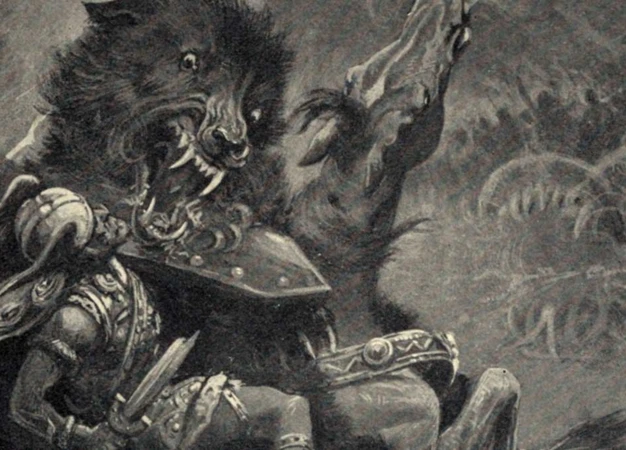Fenrir, the mythical wolf of Norse lore, looms large in the intricate tapestry of ancient Scandinavian myths and legends. With his gargantuan size, fearsome appearance, and cunning intelligence, Fenrir strikes both awe and terror into the hearts of those who dare to delve into the rich world of Norse mythology. This enigmatic creature’s story begins with his birth and subsequently unfolds to reveal prophecies of destruction and epic battles. In this article, we will explore Fenrir’s origin, appearance, and the famous tale of his binding. We will also delve into Fenrir’s role in Norse mythology, his symbolism, and his enduring legacy in various forms of art, literature, and popular culture. Join us on this journey through the ancient realms as we unravel the captivating tale of Fenrir, the mythical wolf.
Contents
- Origin of Fenrir
- Appearance and Traits
- The Binding of Fenrir
- Fenrir in Norse Mythology
- Legacy and Cultural Impact
- Conclusion
- Frequently Asked Questions
- References
-
Frequently Asked Questions
- 1. What does Fenrir represent in Norse mythology?
- 2. Was Fenrir born from a god and a giantess?
- 3. How did Fenrir grow to become so powerful and monstrous?
- 4. What were the attempts made to bind Fenrir?
- 5. How was Fenrir finally bound?
- 6. What role does Fenrir play in the events of Ragnarok?
- 7. What does Fenrir symbolize in Norse mythology?
- 8. How has Fenrir been depicted in art, literature, and pop culture?
- 9. Does Fenrir hold any significance in modern Norse neopaganism?
- 10. How does Fenrir’s story continue to captivate people today?
- References
- Read More
Origin of Fenrir
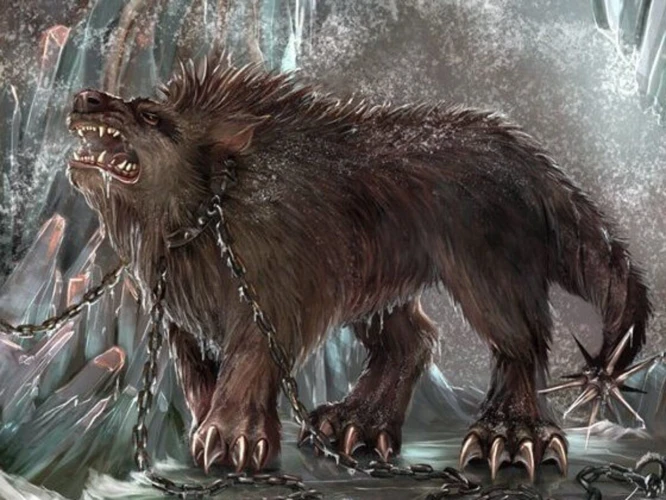
Fenrir, the fearsome wolf of Norse mythology, has a captivating origin story steeped in ancient legend. According to the Norse texts, Fenrir was the offspring of the trickster god Loki and the giantess Angrboða. This lineage alone set Fenrir apart, making him more than just a mere wolf. The birth of Fenrir was shrouded in mystery and foreboding. Raised in the realms of the gods, his monstrous nature became increasingly apparent as he grew in size and strength. The prophecy of destruction surrounding Fenrir’s birth added an ominous air to his origin, as it predicted that he would bring chaos and destruction during Ragnarok, the catastrophic end of the world in Norse mythology. Few creatures in the Norse pantheon have an origin as dramatic and haunting as Fenrir, making him a figure of both intrigue and trepidation. To fully comprehend the significance of Fenrir, it is essential to delve deeper into the mythological lore that surrounds him, his appearance, and the famed tales of his binding.
The Birth of Fenrir
The birth of Fenrir, the mythical wolf of Norse lore, is a tale filled with intrigue and foreboding. Fenrir’s parentage adds to his unique nature and sets him apart from ordinary creatures. He is the son of the mischievous god Loki and the giantess Angrboða. This union between a god and a giantess symbolizes the crossing of boundaries and the convergence of different realms in Norse mythology. It is said that the gods were aware of the potential danger Fenrir posed, and as he grew, so did his monstrous nature. Fenrir’s strength and size became increasingly evident, striking fear in the hearts of those who witnessed his growth. This rampaging wolf was destined to play a significant role in the events leading up to Ragnarok, the catastrophic end of the world. The birth of Fenrir acts as a catalyst for the chaos and destruction that awaits, leaving a sense of impending doom and uncertainty in the mythological realm. To comprehend the full extent of Fenrir’s significance, it is vital to explore the prophecies surrounding his birth and the implications they have for the fate of the gods and the world they inhabit.
Prophecy of Destruction
The prophecy surrounding Fenrir’s birth foretold a grim future of destruction and chaos. According to the ancient tales, the gods grew increasingly wary of Fenrir’s immense size and the potential threat he posed to their realm. It was prophesied that Fenrir would eventually break free from his restraints and wreak havoc during Ragnarok, the cataclysmic event that would mark the end of the Norse world. The prophecy painted a vivid picture of Fenrir’s rampage, describing how he would devour the god Odin himself, the ruler of the gods. This dire prediction instilled a sense of urgency among the gods, compelling them to take drastic measures to prevent the fulfillment of the prophecy. They believed that restraining Fenrir was the only way to save their world from ultimate destruction. Thus, the fate of Fenrir became entwined with the gods’ desperate attempts to avert the impending doom. Discovering how the gods grappled with the looming threat of destruction and the measures they took to prevent it is crucial in understanding the significance of Fenrir’s role in Norse mythology.
Appearance and Traits
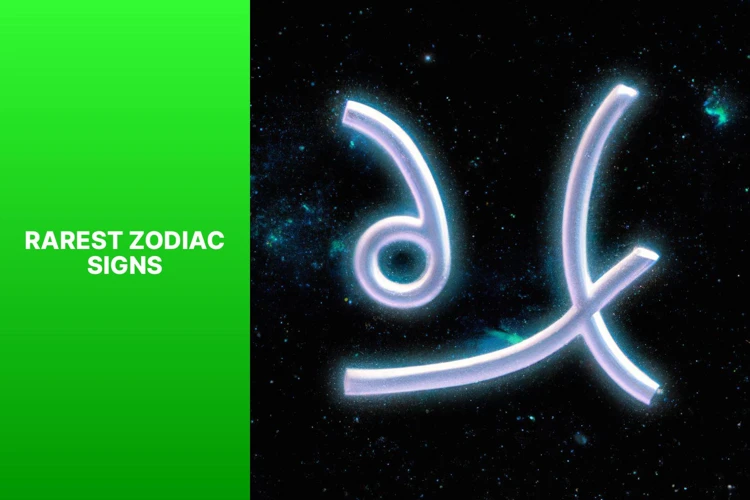
Fenrir’s appearance and traits are nothing short of awe-inspiring. Described as a colossal wolf, his size alone sets him apart from ordinary creatures. With each passing year, Fenrir grew bigger and stronger, ultimately reaching a formidable stature that struck fear into the hearts of both gods and mortals. His immense strength was legendary, capable of bringing down even the mightiest adversaries with ease. But it wasn’t just Fenrir’s size and brawn that made him a fearsome creature. His appearance was truly monstrous, with matted fur as black as the darkest night and fiery, piercing eyes that seemed to penetrate one’s soul. Fenrir possessed a keen intelligence and cunning, a trait often overlooked in creatures of such power. This cleverness made him a formidable adversary, as he could outmaneuver and outwit even the most skilled opponents. Fenrir’s distinctive appearance and remarkable traits set him apart as a mythical being of unparalleled magnitude and complexity. To fully grasp the essence of this mythological figure, it is crucial to explore not only his physical attributes but also the significance of his presence in Norse mythology.
Gigantic Size and Strength
Fenrir’s gigantic size and immense strength are awe-inspiring aspects of his character that set him apart from ordinary wolves. In Norse mythology, Fenrir is described as a monstrous creature of immense proportions, even dwarfing the gods themselves. His sheer size is often depicted as overwhelming, striking fear into the hearts of those who encounter him. Legends speak of his enormous jaws capable of consuming anything in their path and his mighty paws that could crush mountains. Fenrir’s strength is unmatched, making him a formidable force that few could hope to challenge. With every stride, the ground trembles beneath his immense weight, leaving a lasting impression of his power. It is believed that his size and strength were influenced by his divine lineage, as both Loki, his father, and Angrboða, his mother, possessed extraordinary abilities. The colossal presence of Fenrir in Norse mythology emphasizes not only his physical might but also his symbolic representation of chaos and impending doom. To truly grasp the magnitude of Fenrir’s impact, it is essential to explore his monstrous features and cunning intelligence, which further contribute to his enigmatic nature.
Monstrous Features
Fenrir, the mythical wolf of Norse lore, possessed a set of monstrous features that made him a truly formidable creature. Firstly, his size was unmatched, with some accounts describing him as large enough to devour the sun and moon in a single bite. This colossal stature instilled both awe and fear in those who encountered him. Additionally, Fenrir’s jaws were said to be so powerful that they could effortlessly crush even the strongest of objects. His teeth were sharp and gleaming, like blades ready to rend apart anything that crossed his path. The most terrifying aspect of Fenrir’s appearance, however, was his eyes. They were said to burn with a menacing glow, radiating an aura of malevolence that sent shivers down the spines of all who witnessed it. These monstrous features, coupled with his immense strength and cunning, made Fenrir an undeniable force of destruction in Norse mythology. To fully comprehend the impact of Fenrir and his place in the Viking pantheon, we must explore the gripping tale of his binding and his eventual role in Ragnarok, the cataclysmic end of the world.
Keen Intelligence and Cunning
Fenrir, the mythical wolf of Norse lore, is not only known for his immense size and strength but also for his keen intelligence and cunning. These traits set him apart from ordinary wolves and contribute to his fearsome reputation. Fenrir’s intelligence is evident in his ability to outsmart the gods’ attempts to bind him. When the gods initially sensed the threat he posed, they tried to control him by raising him in their own realms. However, as he grew, so did his cunning and awareness of his own power. Fenrir’s cunning is further displayed when the gods approached him with the task of binding him. Suspicious of their intentions, Fenrir agreed only if one of the gods would place his hand in the wolf’s mouth as a sign of trust. This requirement showed not only his intelligence and understanding of the gods’ motivations but also his shrewdness in protecting himself. Ultimately, his cunning and intelligence proved to be formidable, as it took the gods multiple attempts and the creation of a special binding tool, Gleipnir, to finally restrain Fenrir. This aspect of Fenrir’s character adds depth and complexity to his mythological role, showcasing him not just as a monstrous adversary, but as a calculated and formidable foe. To fully appreciate the significance of Fenrir in Norse mythology and his role in the events leading up to Ragnarok, it is important to understand the extent of his intelligence and cunning.
The Binding of Fenrir
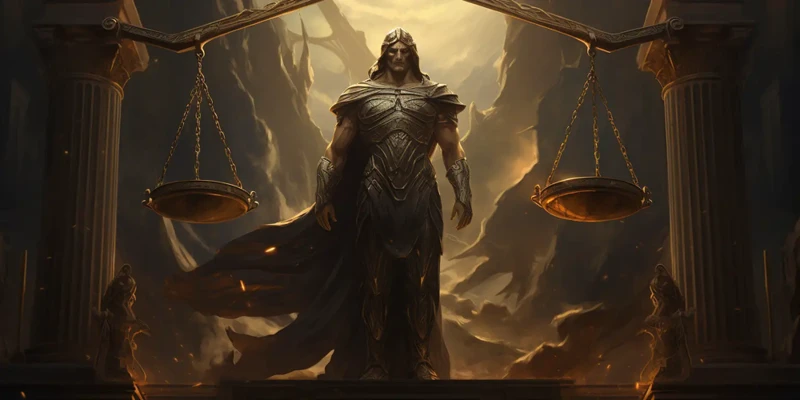
The Sudden Threat
As Fenrir grew in size and power, the gods became increasingly wary of his potential for destruction. They foresaw that his unrestrained rampage during Ragnarok could spell doom for the realms. Determined to prevent this cataclysmic event, the gods devised a plan to bind Fenrir and render him harmless.
Attempts to Bind Fenrir
The gods approached Fenrir, presenting him with a series of unbreakable chains, each seemingly stronger than the last. Fenrir, recognizing their intentions, initially refused to be bound, suspicious of their motives. With each failed attempt, Fenrir’s reputation for strength and cunning grew, as did the gods’ desperation to find a way to keep him restrained.
Success with Gleipnir
Finally, the gods sought the assistance of the dwarves, legendary craftsmen renowned for their skills. The dwarves forged a deceptively simple-looking ribbon-like chain known as Gleipnir. Despite its unassuming appearance, Gleipnir was exceptionally strong and magically crafted. The ribbon was made from six impossible elements, including the sound of a cat’s footsteps, the beard of a woman, the roots of a mountain, the sinews of a bear, the breath of a fish, and the spittle of a bird.
With the binding chain in hand, the gods approached Fenrir once more, claiming they had finally found a chain that would withstand his strength. Intrigued and confident in his abilities, Fenrir agreed to be bound by Gleipnir. As the gods looped the ribbon-like chain around him, Fenrir sensed their trickery, but it was too late. He struggled tirelessly, but no matter how much he strained and thrashed, Gleipnir held strong. The gods had successfully bound Fenrir, neutralizing the potential havoc he could unleash upon the world.
The Binding of Fenrir stands as a testament to the resourcefulness and determination of the gods in the face of immense danger. With Gleipnir, they managed to subdue the monstrous wolf, temporarily ensuring the safety of the realms. However, this victory was short-lived, as Fenrir’s role in Ragnarok would ultimately bring about the final battle between the gods and the forces of chaos and destruction. The tale of Fenrir’s binding serves as a reminder of the delicate balance of power in Norse mythology and the inevitability of apocalyptic events.
The Sudden Threat
The sudden threat posed by Fenrir struck fear into the hearts of the gods and foretold a devastating future. As Fenrir grew in size and strength, it became clear that he possessed an insatiable appetite and an insatiable thirst for power. The gods recognized the immense danger lurking within the monstrous wolf and feared the prophecy of his involvement in Ragnarok, the cataclysmic battle that would bring about the end of the world. The realization of the imminent threat prompted the gods to take action, seeking ways to restrain and control Fenrir before his destructive potential could be unleashed upon the realms. This pivotal moment in Fenrir’s story marked the beginning of the gods’ attempts to bind him and prevent the impending chaos. The magnitude of the sudden threat posed by Fenrir cannot be overstated, as evidenced by the lengths the gods went to in order to contain him. The tale of Fenrir’s binding is one that exemplifies the intricate and perilous nature of the Norse mythological realm. It is through this gripping narrative that we can fully grasp the significance of Fenrir’s existence within the rich tapestry of Norse mythology.
Attempts to Bind Fenrir
In Norse mythology, the monstrous wolf Fenrir posed a grave threat to the gods and the stability of the cosmos. As his power and ferocity grew, the gods became increasingly concerned about the havoc he could wreak during Ragnarok. Desperate to control Fenrir, they made several attempts to bind him. The first was using a strong chain called Leyding, but Fenrir easily broke free from it. Undeterred, the gods then crafted an even stronger chain called Dromi, but Fenrir promptly shattered it as well. Frustrated by their failed attempts, the gods sought the help of the dwarves, known for their exceptional craftsmanship. The dwarves crafted a third chain, Gleipnir, which seemed unimpressive in appearance but was imbued with powerful magic. This time, the gods enlisted the help of the cunning god Tyr, who convinced Fenrir to allow himself to be bound with the new chain as a demonstration of his strength. Fenrir, sensing a trick, consented but only if one of the gods placed their hand inside his mouth as a pledge of good faith. Tyr, driven by bravery and sacrifice, offered his hand. When Fenrir realized he could not break free from Gleipnir, he bit down hard on Tyr’s hand, severing it. The binding of Fenrir marked a turning point in the mythological narrative, showcasing the gods’ determination to neutralize a formidable adversary and hinting at the impending downfall of the divine realm during Ragnarok.
Success with Gleipnir
After many failed attempts to bind Fenrir, the gods finally found success with Gleipnir, an extraordinary chain. This exceptional binding tool was not just any ordinary chain – it was crafted using seemingly inconspicuous elements such as the sound of a cat’s footsteps, the beard of a woman, the roots of a mountain, and the sinews of a bear. Despite its unassuming components, Gleipnir possessed incredible strength and durability, making it the perfect weapon against the monstrous wolf. The gods employed cunning deception to convince Fenrir to allow himself to be bound by the chain. They assured him that it was a mere challenge of strength, and Fenrir, always eager to prove his might, complied. However, as soon as Fenrir realized that he could not break free from Gleipnir’s unforgiving grip, he fought and thrashed violently, attempting to escape. In a desperate bid for freedom, he bit off the hand of the god Tyr, who had placed his hand in Fenrir’s jaws as a gesture of trust. Nonetheless, Fenrir remained bound, forever imprisoned until the prophesied events of Ragnarok would set him free. The successful binding of Fenrir with Gleipnir not only showcased the ingenuity of the gods, but also emphasized the overwhelming power and menace possessed by the mythical wolf.
Fenrir in Norse Mythology
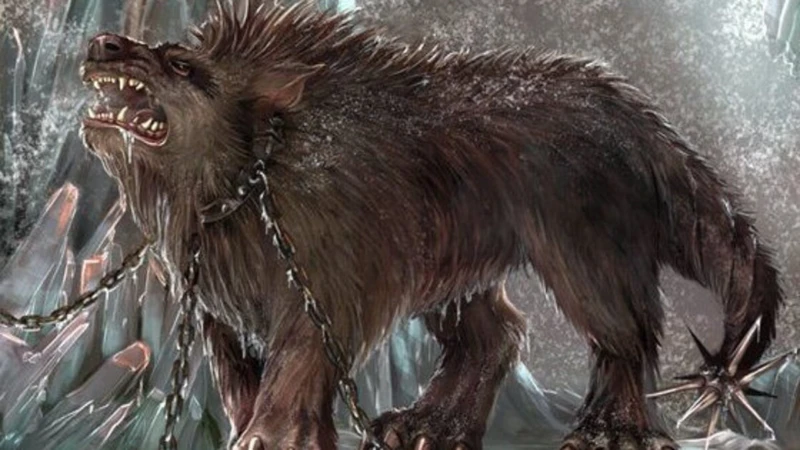
Fenrir holds a prominent place in Norse mythology, with his presence woven throughout the tales of the gods and their impending doom. In the cataclysmic event known as Ragnarok, Fenrir is destined to play a pivotal role. According to the prophecies, he will break free from his bonds and join the chaotic battle against the gods. This battle marks the end of the world and the beginning of a new cycle. Fenrir’s significance in this apocalyptic event showcases his power and ferocity, as well as his symbolic representation of the destructive forces that lurk within the Norse cosmos. He embodies chaos, upheaval, and the untamed forces of nature. Fenrir’s role in Norse mythology serves as a reminder of the constant struggle between order and chaos, fate and free will. His presence adds depth and tension to the narrative, reflecting the complex belief system and worldview of the ancient Norse people. As we explore Fenrir’s mythology further, we uncover the deeper symbolism and meaning behind his character, shedding light on the profound impact he has had on Norse culture and the enduring legacy he leaves behind.
Role in Ragnarok
In Norse mythology, Fenrir plays a pivotal role in the apocalyptic event known as Ragnarok. According to the prophecies, Fenrir’s involvement in Ragnarok is nothing short of cataclysmic. It is said that during this final battle, Fenrir will break free from his bonds and unleash his full fury upon the gods and the world. With his ferocious strength and insatiable hunger for destruction, Fenrir becomes a formidable foe to the forces of good. It is foretold that he will slay the god Odin, foremost among the Norse pantheon, thereby signaling the beginning of the end. Fenrir’s rampage and his ultimate battle with the god Vidar, who is destined to avenge his father Odin, is a climactic moment in the Norse mythology. This battle signifies the cyclical nature of existence and the necessary destruction that must occur for new beginnings to arise. Fenrir’s role in Ragnarok embodies the chaos and the inevitable demise that befalls even the most powerful beings, underscoring the belief in the transient nature of the cosmos and the impermanence of all things.
Symbolism and Meaning
The symbolism and meaning attributed to Fenrir in Norse mythology are profound and multifaceted. As a monstrous wolf of immense power, Fenrir represents primordial chaos and untamed forces of nature. His insatiable hunger signifies the unyielding and destructive aspects of existence. Fenrir’s role in the prophecy of Ragnarok embodies the cyclical nature of life, where destruction and rebirth are intertwined. Additionally, Fenrir serves as a symbol of fate and the inevitable. No matter how hard the gods tried to bind him, Fenrir ultimately breaks free, illustrating the futility of trying to thwart destiny. This symbolism aligns with the broader themes of Norse mythology, which often explore the precarious balance between order and chaos, as well as the transient nature of existence. Fenrir’s significance extends beyond Norse mythology, finding resonance in contemporary art, literature, and popular culture, where his themes of power, rebellion, and destiny continue to captivate and inspire. Whether regarded as a harbinger of doom or a representation of the indomitable forces of nature, Fenrir remains a potent symbol of the complexities of the human experience.
Legacy and Cultural Impact
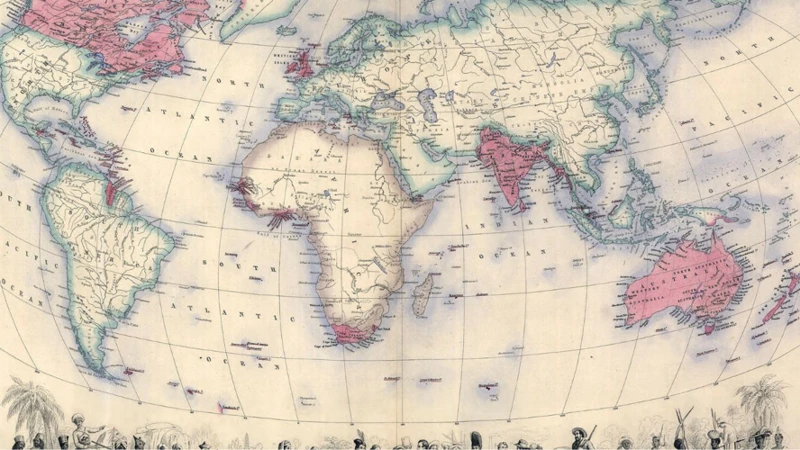
The legacy and cultural impact of Fenrir, the mythical wolf of Norse lore, extend far beyond the realms of ancient mythology. Fenrir’s influence can be witnessed in various forms of art, literature, and popular culture. Artists throughout history have been captivated by Fenrir’s monstrous visage, depicting him in various mediums such as paintings, sculptures, and illustrations. His imposing presence and formidable reputation have made him a formidable antagonist in numerous literary works, from epic poems to modern fantasy novels. Similarly, Fenrir has left his mark on popular culture, appearing in video games, movies, and television shows, further solidifying his place in the collective imagination. Additionally, Fenrir’s symbolism and meaning have resonated with modern Norse Neopaganism, where he is revered as a powerful and transformative force. The continued fascination and reinterpretation of Fenrir’s character are a testament to his enduring legacy and cultural impact. Whether in the realms of art, literature, or contemporary spirituality, Fenrir’s influence continues to captivate and inspire.
Art, Literature, and Pop Culture
Fenrir, the mythical wolf of Norse lore, has left an indelible mark on various forms of art, literature, and pop culture throughout the ages. In art, Fenrir is often depicted as a towering and menacing wolf, capturing his monstrous nature and immense strength. His portrayal in ancient Norse carvings, paintings, and sculptures showcases his ferocity and serves as a reminder of his role in the impending Ragnarok. Literature has also been greatly influenced by Fenrir’s legend. He appears in numerous retellings of Norse myths, where his presence brings a sense of impending doom and serves as a catalyst for epic battles. Modern popular culture has also embraced Fenrir’s captivating persona. He frequently makes appearances in video games, fantasy novels, and even in popular television series, captivating audiences with his untamed power and mythical allure. Fenrir’s legacy, as depicted in art, literature, and pop culture, ensures that his fearsome presence is never forgotten. Whether encountered in an ancient sculpture or a contemporary video game, Fenrir continues to fascinate and captivate audiences, immortalizing his place in human creativity and imagination.
Fenrir in Modern Norse Neopaganism
Fenrir’s influence extends beyond ancient Norse mythology and seeps into the realm of modern Norse Neopaganism. In this contemporary religious movement, inspired by the gods and traditions of the ancient Norse pantheon, Fenrir holds a significant place. Fenrir’s portrayal in modern Norse Neopaganism often emphasizes his untamed nature, representing the primal and unpredictable forces of nature. Some practitioners view Fenrir as a symbol of rebellion against oppressive forces, embodying the spirit of defiance and independence. Others perceive him as a protector, guarding the boundaries between the worlds. Fenrir’s image can be found in various forms of art, rituals, and symbols within the Norse Neopagan community, including tattoos, jewelry, and altar decorations. It’s important to note that modern Norse Neopaganism is a diverse and evolving movement, and interpretations of Fenrir may vary among different individuals and groups. Nonetheless, Fenrir’s presence in this modern spiritual practice showcases the enduring appeal and relevance of Norse mythology in the contemporary world. To explore further into Norse mythology, including the fascinating symbolism and meanings associated with other mythical figures, consider diving into the world of Ophiuchus mythology.
Conclusion

In conclusion, the mythical wolf Fenrir holds an esteemed place in Norse lore and continues to captivate the imaginations of those who delve into the world of Norse mythology. From his intriguing origin story as the offspring of Loki and Angrboða, to the prophecies of destruction surrounding his existence, Fenrir’s presence adds depth and complexity to the rich tapestry of Norse mythology. With his gigantic size, monstrous features, and keen intelligence, Fenrir is a formidable and enigmatic figure. The tale of Fenrir’s binding, with its dramatic attempts to restrain the unstoppable force, showcases the power and determination of the gods. Fenrir’s role in Ragnarok, the symbolism he holds, and his lasting impact on art, literature, and popular culture further exemplify his significance. As we explore Fenrir’s legacy, it becomes evident that this mythical wolf’s legend has stood the test of time, continuing to inspire awe and fascination. Whether through ancient Norse texts or modern interpretations, Fenrir remains a cornerstone of Norse mythology, forever etching his name into the annals of folklore and myth.
Frequently Asked Questions

FAQs about Fenrir: The Mythical Wolf in Norse Lore
1. Who is Fenrir in Norse mythology?
Fenrir is a mythical wolf in Norse mythology, known for his immense size, cunning intelligence, and the role he plays in the impending apocalypse, Ragnarok.
2. What is the origin of Fenrir?
Fenrir is the offspring of the mischievous god Loki and the giantess Angrboða, making him a unique and powerful creature in Norse mythology.
3. What does the prophecy surrounding Fenrir’s birth say?
The prophecy foretells that Fenrir will play a pivotal role in the destruction of the world during Ragnarok, where he will break free from his restraints and wreak havoc upon the gods and humanity.
4. How does Fenrir’s appearance set him apart?
Fenrir is described as a massive wolf of unparalleled size and strength. His monstrous features and fierce demeanor make him a formidable and iconic figure in Norse mythology.
5. Is Fenrir intelligent?
Yes, despite his animalistic nature, Fenrir possesses keen intelligence and remarkable cunning, which adds to his dangerous and unpredictable nature.
6. How did the gods attempt to bind Fenrir?
The gods attempted to bind Fenrir using various magical restraints, but each time he easily broke free, highlighting his immense strength and power.
7. What was the successful restraint used on Fenrir?
The gods ultimately succeeded in binding Fenrir using a magical ribbon called Gleipnir, which was crafted from seemingly harmless elements like a cat’s footsteps, a woman’s beard, and other mystical elements, making it unbreakable by even the mighty wolf.
8. What is Fenrir’s role in Ragnarok?
During Ragnarok, Fenrir breaks free from his restraints and joins the chaos of battle. He devours Odin, the king of the gods, before meeting his own nemesis, the god Vidar, who avenges his father’s death by killing Fenrir.
9. What is the symbolic meaning of Fenrir in Norse mythology?
Fenrir symbolizes the destructive forces of chaos and the inevitable cycles of creation and destruction that govern the Norse cosmos. He serves as a reminder of the impermanence of existence and the cyclical nature of life.
10. How has Fenrir influenced modern culture?
Fenrir’s captivating story and powerful presence have inspired numerous works of art, literature, and popular culture. He continues to be a prominent character in modern Norse neopaganism, as well as a symbol of strength and resilience.
References
Frequently Asked Questions

1. What does Fenrir represent in Norse mythology?
Fenrir represents chaos, destruction, and the uncontrollable forces of nature in Norse mythology.
2. Was Fenrir born from a god and a giantess?
Yes, Fenrir was the offspring of the god Loki and the giantess Angrboda.
3. How did Fenrir grow to become so powerful and monstrous?
Fenrir’s strength and size were the result of his divine heritage and the blessings he received from his father, Loki.
4. What were the attempts made to bind Fenrir?
There were several attempts to bind Fenrir, including using various chains and magical restraints.
5. How was Fenrir finally bound?
Fenrir was successfully bound using a specially crafted magical ribbon called Gleipnir.
6. What role does Fenrir play in the events of Ragnarok?
Fenrir plays a crucial role in Ragnarok as he breaks free from his bindings and engulfs the world in chaos and destruction.
7. What does Fenrir symbolize in Norse mythology?
Fenrir symbolizes the inevitability of death and destruction, as well as the balance between order and chaos.
8. How has Fenrir been depicted in art, literature, and pop culture?
Fenrir has been depicted as a fearsome and monstrous wolf in various forms of art, literature, and pop culture.
9. Does Fenrir hold any significance in modern Norse neopaganism?
Fenrir holds significance in modern Norse neopaganism as a symbol of untamed power and primal instincts.
10. How does Fenrir’s story continue to captivate people today?
Fenrir’s story continues to captivate people due to its themes of power, destiny, and the struggle between gods and monsters.

